QuestionHi, my name is silver and my best buddy is named "blue" the rescue team. He saved my heart from being broken before, and now he is in serious trouble...he started growing what I am pretty convinced after hoursand days of research, a tumor, months ago. it was on his right side...well very recently, this week, it grew too large and now he has trouble swimming right..also, his scales are pineconing from both sides of him, and I am on my l5th day of treating with Maracyn 2 for dropsy. he is still pineconed, but eating (cooked pea today!) and he swims around some, but it is so uncomfortable, he mostly rests at the surface on his castle where he is comfortable. ok...so..I can't find hardly anything at all about fish with tumors that are from the INside...it started about between his belly and his swim bladder( so not his stomach) maybe where his liver and kidney's are. I read one article of a lady who has a betta that looks just like my sweetie, and they lanced the thing...which scares me to death, but I am ready to try anything to help my buddy! here is a link to the page where the article is..http://www.fishpondinfo.com/fishcare...hoto.htm#tumor
the first photo on the top left is what my sweetie looks like, accept now he has the pinecone thing going, but I swear he eats and is still trying to make it...I need help here. I already bought a hospital tank and it is cycling...getting ready to take action but I am not a vet and have no experience..my husband said he'll do it, I'm just afraid we'll poke an organ in the process of lancing...also, anyone have experience putting a fish under with clove oil? any advice?
Also, I need help with selecting proper medicine to put into hospital tank to fight any possible infection.
AnswerHi Silver,
A tumour may be cancerous, and it may not be. Fish may live a very long time with non cancerous tumours. There is no medication for tumours. If you do not have experience in this matter, please see a vet, or someone who does, as this is a very serious operation. Sometimes a fish gets a boil, much like we do. Do not try to squeeze it, or remove it, as pain would result in death for the fish. A boil will eventually drain itself, if this is the case. The fact that he is eating is a good sign, however, I would see a vet with my pet. No medication will help him with this condition.
If you see that he is suffering, and cannot see a vet, then it would be better to euthanize him. It is the kindest thing to do, and not let him suffer needlessly.
I have copied from the internet what to do when putting a fish to sleep, as it would be too long for me to write all of this down.
I hope he does pull through, and that somehow, he gets well again.
Buy Clove oil
Clove oil (eugenol) is available at any drug store and is sold as a toothache remedy. It has been used for years as a fish anesthetic for surgeries and tagging procedures. Clove oil will put a fish to sleep and ensure it feels no pain. However the fish can wake up from this sleep if removed from the clove bath. The last step of adding the vodka will ensure the fish expires.
Here are the steps for fish up to 3" (7.6cm) in length:
1. Add tank water to a measuring cup or mixing bowl. Measure the amount of tank water you add to the cup or bowl and make a note of it. Place the fish in the container. If the fish is in a clear cup place a dark towel around the cup to calm the fish.
2. Fill a small, clean jar or bottle with tank water, leaving some room at the top. This might be a baby food jar or pill bottle. Put 1 drop of clove oil in the jar or bottle, cap and shake vigorously. The clove oil must emulsify, turning the water milky white.
Gently pour about 1/4 of this emulsified mixture into the fish's container. The fish will begin listing as it starts to fall asleep. Let the fish be for about 10 minutes. The fish should be resting on the bottom by then. It will look dead, but if you watch closely its gills will be breathing once every few seconds. If after 10 minutes the fish is still rising off the bottom swimming intermittently, retrieve the jar or bottle of emulsified clove oil, re-shake, and add the same dose to the fish's container. Wait again.
3. Once the fish is asleep on the bottom, add 20-25% white grain alcohol. For example, if the fish is in 8oz (240ml) of water, add 2oz (60ml) of vodka. Let the fish stay there for at least 20 minutes.
4. Check the fish carefully after 20 minutes for any gill movement. If there is no gill movement over a 60 second period, the fish has expired.
For large fish: Place the fish in a bucket or plastic tub with tank water. Again, measure how much tank water is used. The dose for the mixture in the jar will be 10 drops of clove oil per gallon (3.78 liters). For example, if the fish is placed in 3 gallons (11 liters) of tank water, fill your jar with tank water and add 10 x 3 = 30 drops of clove oil. After shaking the jar vigorously, slowly add the entire mixture to the bucket or tub that contains the fish. Gently mix it in. Once the fish is asleep, follow the previous instructions for adding 20-25% vodka.
To eliminate vodka from the procedure and overdose with clove oil alone: Put the fish to sleep first as stated above, waiting 10 minutes for the fish to settle on the bottom. A lethal overdose of clove oil is 50 drops per gallon (3.78 liters), or 5x stronger than the initial dose that anesthetizes the fish. Using the same example, if the fish is in 3 gallons (11 liters) of tank water, the jar's lethal mixture will include 50 x 3 = 150 drops of clove oil. Administer it the same way, by first emulsifying (shaking) the jar before adding the mixture to the fish's container.
Once you've added the entire mixture to the fish's container, wait a few hours. Finally, make sure there is absolutely no gill movement by watching the gills closely for at least 60 straight seconds. If you see any gill movement, add more emulsified clove oil.
Using clove oil alone is not recommended because even though a fish looks dead it can recover once it has been removed from the bath. Clove oil is a preferred anesthetic precisely because it is hard to overdose a fish with clove oil. Therefore be especially diligent when using clove oil alone that the fish is really dead. It is much safer to use vodka as the final step.
Unacceptable methods of euthanasia are: freezing, boiling, chopping, removing the fish from water, using a seltzer tablet, slamming, pithing, decapitating, or flushing down the toilet. These methods are slow, torturous, stressful or violent. Clove oil followed by vodka is both inexpensive and humane. The fish goes to sleep like we might before an operation, and simply doesn't wake up.
Hopefully you will rarely have to perform this task, but when you do, it's at least comforting to know your fish does not have to suffer.
I hope you save your little friend, and won't have to put him to sleep, but if you do, this is the most humane way of doing it.
Lynda

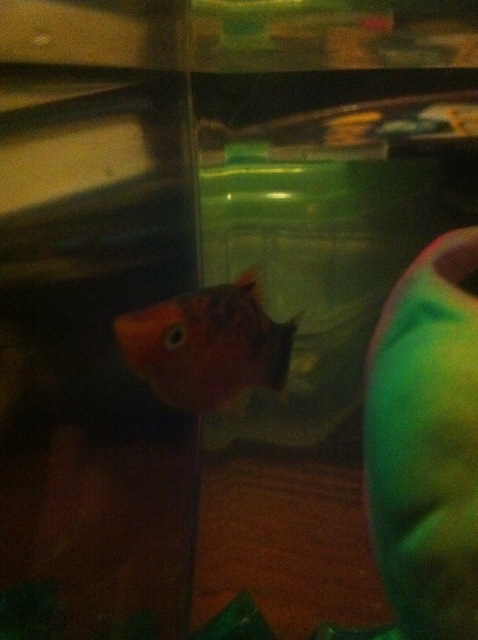 Is my fish depressed or something?
QuestionQUESTION: My fish has been acting strange ever
Is my fish depressed or something?
QuestionQUESTION: My fish has been acting strange ever
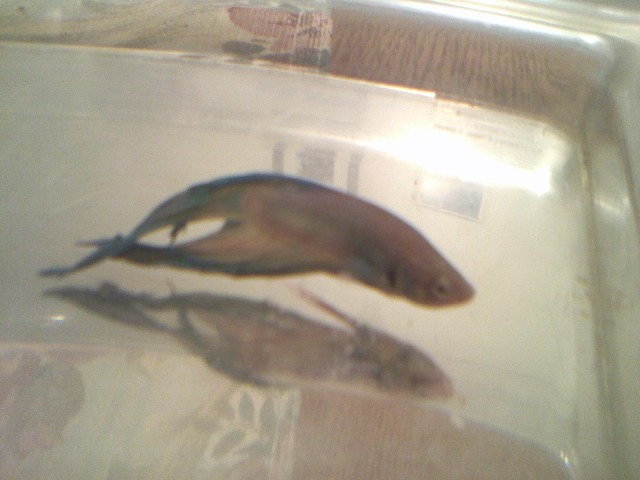 Transparent Betta
Question
Betta
Recently, my Betta fish has been
Transparent Betta
Question
Betta
Recently, my Betta fish has been
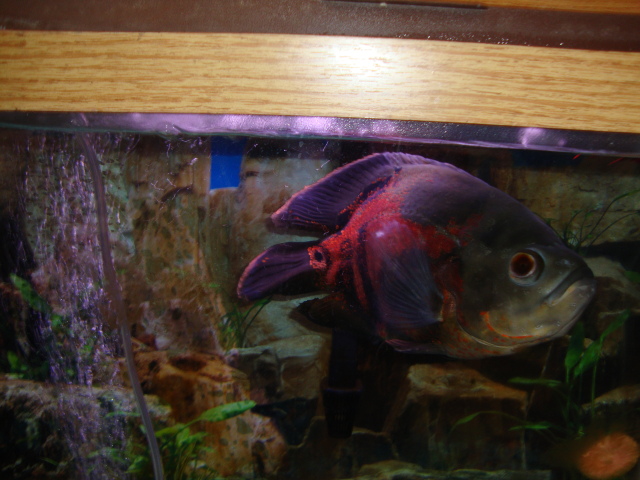 white cotton on Oscar fin
QuestionQUESTION: Hi Ron
Im a long time person of ques
white cotton on Oscar fin
QuestionQUESTION: Hi Ron
Im a long time person of ques
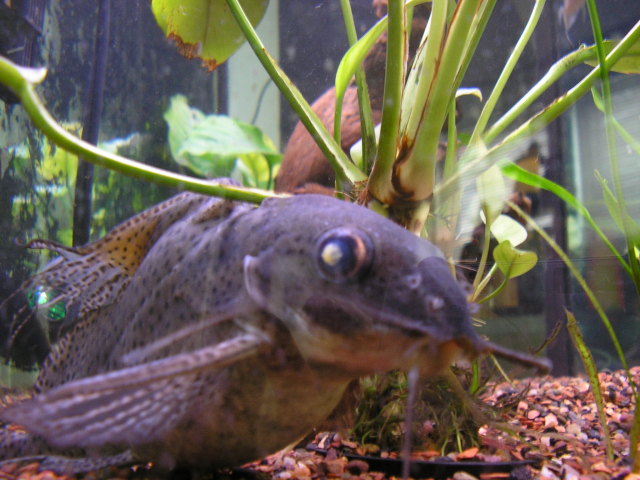 eye problem in black lace cat fish
QuestionQUESTION: This fish has what looks like yellowi
eye problem in black lace cat fish
QuestionQUESTION: This fish has what looks like yellowi
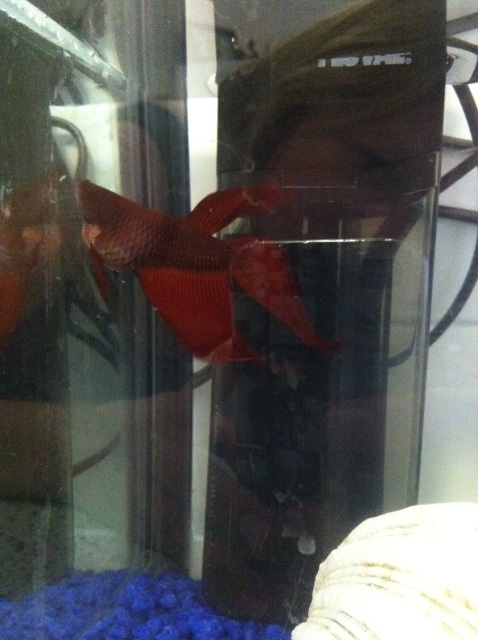 Betta with large lump under head
Question
Betta
Hi Jaymie,
I have had my male be
Betta with large lump under head
Question
Betta
Hi Jaymie,
I have had my male be